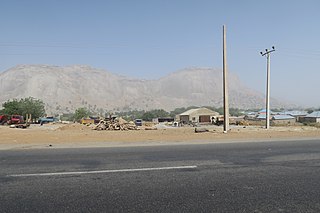History
In the early days of 1802 before the Jihad of Usman Danfodio, an Islamic scholar named Mallan Muhammadu Zabo, one of the ancestors of the Borno Empire migrated along the east of the area. He led an entourage in search of green pasture for their flocks. Mallan Zabo was wealthy and took with him many flocks, birds, horses, his wives and children as well as some slaves. It is also evident that the entire entourage that came along with him were part of the Barebari people that settled firstly in a nearby Village called ‘Badarawa’. The entourage later stopped at a valley near a river they named “Tafkin Kaiwa” which they made as their first settlement.
The Katsinawa merchant also found the place a good area for the settlement, the present days Gidan Dankwara. Another group of people came from Kwazare Town of Niger Republic together with their leader called Adagwargo, who belong to Rahazawa ethnic background, the present Gidan Sarkin Ruwa in Barhazawa area. This entourage also came with their herds and branched to the same valley where they found shelter and water to feed their herds. As they interacts socially with the first settlers, the Barebari, results to a growing population and the area become convenient for many stop-over traders, who used spend nights for they commercial undertakings. Yet another group of hunters who came around the valley in search of wild animals stars to settle there.
The area developed and became very big, with Mamman as their leader, the ruler of Badarawa, Magaji Bello, decided to come and re-settle in Gonar Mai Saje, (‘Yan Kukoki) where there was abundance of water. The people settled and began to cultivate rice along the valley in large quantity, due to their ability in rice production; the community was named ‘Shinkafi’ from the hausa name of rice - shinkafa. Due to insecurity of the times, Magaji Bello erected a wall (called Ganuwa) around the settlement which was enforced by a circular ditch. The descendants of Magaji Bello are the present Gidan Doka.
The socioeconomic activities of the town defines its international market status attracting traders and merchants from all over the federation and others from the neighboring countries like Niger Republic, Cameroon, Togo, Mali, Benin Republics, Chad as well as Ghana. There also exists some Tobacco leaf buying centres, namely Nigerian Tobacco Company (NTC) and Philp Morris Tobacco Company others were cottage industries.
The disciplined, religious and economic natures of the settlement conglomerate and attracted other settlements from Kamarawa, Shanawa, Badarawa, Isa and Sabon-Birnin Gobir, and such engineered the then Sarkin Gobir of Isa to place keen interest on the settlement – Shinkafi. The town developed tremendously to become the headquarters of the then Isa Native Authority in the North-West State, Isa Local Government Area in the then Sokoto State and the present Shinkafi Local Government Area of Zamfara State, Nigeria.
The majority of the inhabitants are predominantly Hausas and Fulanis with quite a number of other tribes like Igbos, Yorubas, Tivs and Zabarmawas. The town now has about 15 Primary Schools, 4 Secondary Schools, a General Hospital and on-going Referral Hospital, 4 Dispensaries, a number of Private Clinics. It has also pipe borne water system, as well as connected to the national grid, with good road network, Banking Services, Exotic Restaurants etc.
The town leadership used to be District Head from 1835 – 2000, when the First Executive Governor of Zamfara, Sen. Ahmed Sani (Yariman Bakura) upgraded it to an Emirate – Sarkin Gabas of Shinkafi (Second Class Emir). The rulers from then to-date are as follows:-
1. Magaji Mamman 1835 – 1845;
2. Magaji Bello 1845 – 1859;
3. Magaji Ibrahim I 1859 – 1874;
4. Magaji Bube 1874 – 1889;
5. Magaji Umaru 1889 – 1903;
6. Magaji Abdu 1903 – 1922;
7. Magaji Ahmadu 1922 – 1926;
8. Magaji Mainasara (Dango) 1926 – 1939;
9. Magaji Ahmadu Lamido 1939 – 1950;
10. Magaji Ibrahim II 1950 – 1990;
11. Magaji Mohammadu Moyi 1990 – 1994;
12. Magaji Mohammadu Makwashe 1995 – 2000;
13. Emir Mohammadu Makwashe 2000 – to date.
The postal code of the area is 883. [1]
Cloud
In Shinkafi, there is a noticeable seasonal variation in the average cloud cover percentage throughout the year.
The period with the least cloud cover in Shinkafi starts approximately on November 7 and extends for 4.1 months, concluding around March 10.
January stands out as the clearest month in Shinkafi, with an average of 67% of the sky being clear, mostly clear, or partly cloudy.
Conversely, the cloudier portion of the year begins around March 10 and continues for 7.9 months, ending approximately on November 7.
May ranks as the cloudiest month in Shinkafi, with an average of 66% of the sky being overcast or mostly cloudy. [5]






